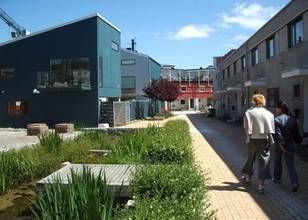
Community streets are designed for the needs of pedestrians and pedaling.
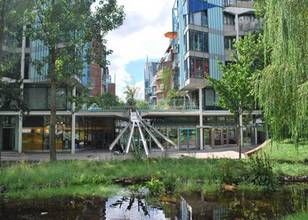
Building walls and greening on the roof.
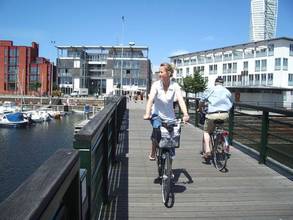
Residents who live here are either on foot or by bicycles.
Establish a Sustainable Ecological City
Professor Lin Zhengyi thinks that to become an eco-city requires a series of urban transformation projects, such as Malmo, which is located in Sweden with a population of only 270,000 people. After the urban renovation project, it becomes a model city for ecological, community, and economic development. Malmö established the Bo01 Residential Demonstration Area in the City of Tomorrow in 2001, then joined the CIVITAS (CIty-VITAlity- Sustainability) Project in 2002 to promote sustainable and energy-efficient mass transit systems, and continued to host Sustainable City Development 2007 and Sustainable. Innovation 2008 and other related forums on the environment and sustainable development. In 2008, it was
selected as the third place in the Yale University Environmental Sustainability Index report. In the same year, it was also named by the environmental protection agency DoSomething as one of the world's green cities.
Malmö followed the Swedish experience of "Eco-village" in the reconstruction of the city. Therefore, how to create a viable ecological residence for the city has also become the primary challenge. There is no space limit for citizens to live in the living environment. In this project, "Eco-village" is a kind of enthusiasm to save the world and it is necessary to make sacrifices. It seeks to reduce the harm to the environment. Therefore, under the high quality of the environment and the high standards of society, the city of tomorrow, Bo01, was born. Bo01's goal is to use renewable energy such as solar energy, wind power, and hydropower to produce electricity that meets the daily needs of residents, achieve 100% self-sufficiency, and become a model for a global sustainable city. Bo01 presents a people-oriented approach that combines a
blueprint for the future of life with aesthetic, ecological and high-tech needs.

Community streets are designed for the needs of pedestrians and pedaling.

Building walls and greening on the roof.

Residents who live here are either on foot or by bicycles.
The waste management system creates a system that minimizes the consumption of resources, enables the reuse of waste resources, and further allows waste to be converted into energy. There is usually a classification room in or near the residence, which makes it easy for residents to classify paper and organic matter. The 13 waste recycling centers built by residents have effectively recovered 90% of the waste in the area. At the same time, two parallel systems can track food waste, including the disposal of kitchen waste in sinks and the centralized system of dedicated vacuum food waste. After the discarded raw materials produced by the residents of the entire district have been screened, they are put into use again for the wastes, and the discarded materials are reused in the ground floor facilities.
In Bo01, 1,000 homes are supplied with renewable energy, including solar, wind and hydro. In the case of hydropower, the thermal energy from the ocean and underground aquifers is extracted by the hot pump. The preservation of the most natural source of water in the bedrock also promotes the storage of seasonal hot and cold water. A total of 1,400 square meters of solar panels placed in the ten tallest buildings, with heat pump for heat production.

Greenland provides other living creatures as habitat.
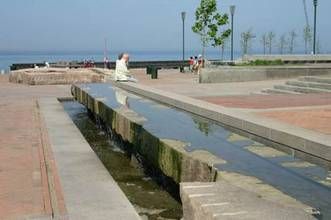
Rainwater runoff system full of design sense.
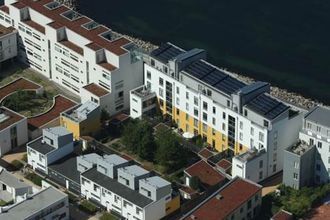
The district is fully using renewable energy
based on solar energy, wind power, and hydraulic power.
In order to reduce transportation demand, various modes of transportation services are also designed to encourage residents to use environmentally friendly transportation methods, including priority measures for pedestrians and cyclists, bus stop distances every 300 meters, bus links to major urban centres , and the every-seven-minute average frequency of departures.
In early Malmö, there was a problem of seasonal flooding. To solve the problem of flooding, a large number of roofs were planted on the roof and an open rainwater overall control system was used to support the problem. In the industrial zone, a “top plant garden” covering 9,000 square meters was established and opened to the general public, which is currently the largest green roof in the area.
In terms of implementation, as the majority of local residents have taken part in this project, the official departments including cultural workshops, design-related information, cultural institutions, and informal forums held on street alleys are all important to public space, coffee, museums, community activities, and new civic life. It has become an international model for the three standards of "renewal, participatory solutions, and regional greening" in major cities. This case was awarded the first prize of the local planning practice award (PMPL) of the UN-HABITAT "Best in 2009/2010."

Make full use of rainwater and snow melt to create a mini wetland habitat for aquatic animals.

Plant as many plants as possible to attract small animals.
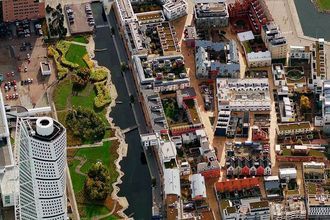
The originally abandoned industrial port is transformed into an ecologically sustainable
new town.
Reference:
Taipei Urban Design Center
https://college.itri.org.tw/Topiclearn.aspx?id=253
Images from:
landscape and social observation
http://blog.yam.com/kueihsienl/article/7722191
- Top -
© Copyright 2018 Taipei Municipal Daan Elementary School - All Rights Reserved